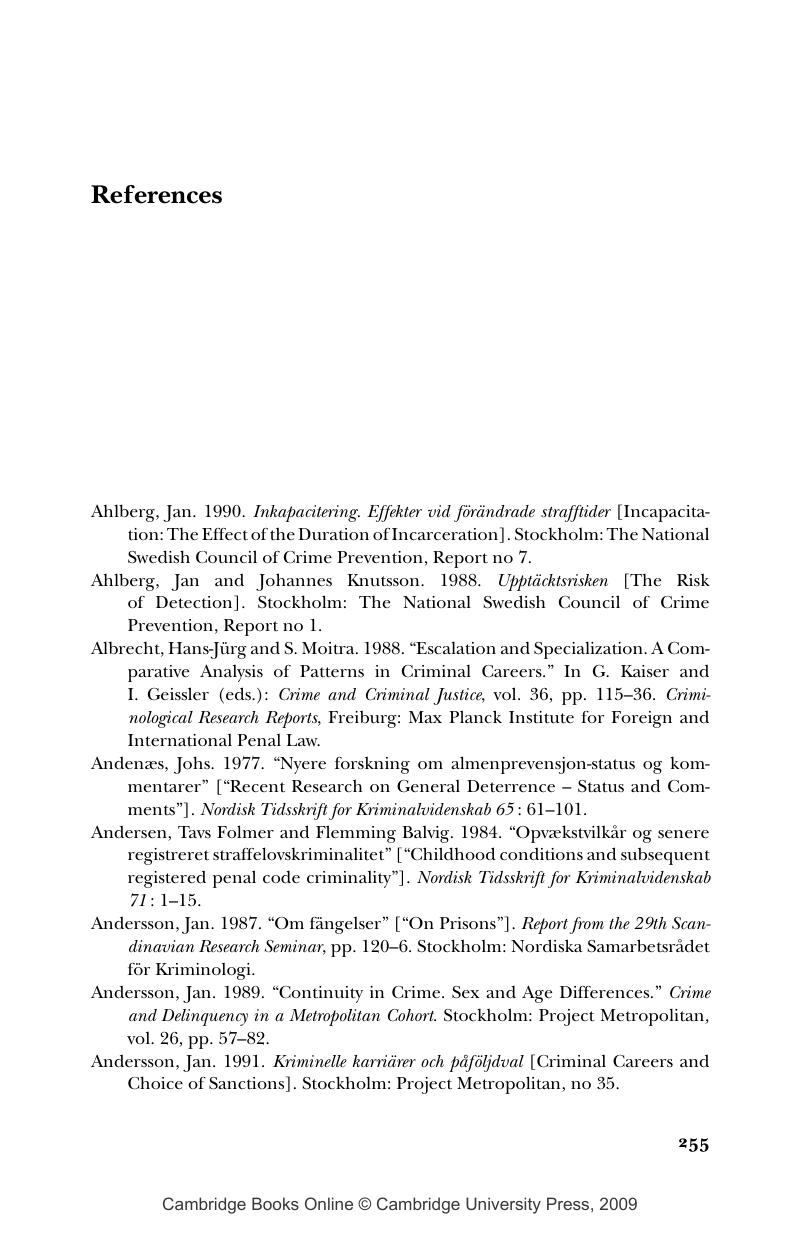Book contents
References
Published online by Cambridge University Press: 09 July 2009
Summary

- Type
- Chapter
- Information
- The Criminal CareerThe Danish Longitudinal Study, pp. 255 - 272Publisher: Cambridge University PressPrint publication year: 2002

